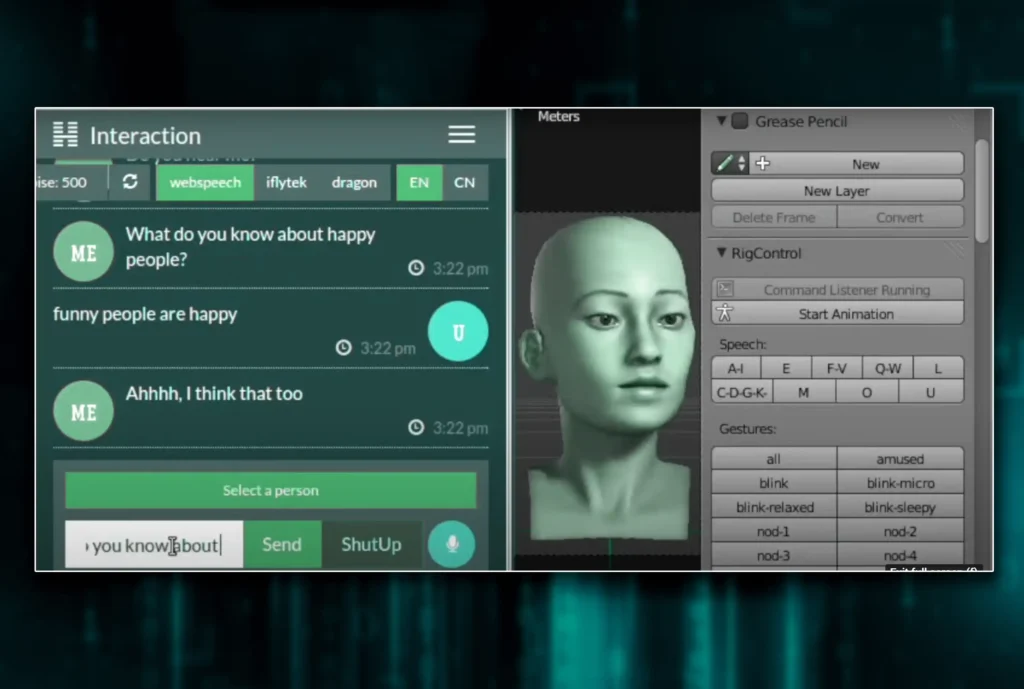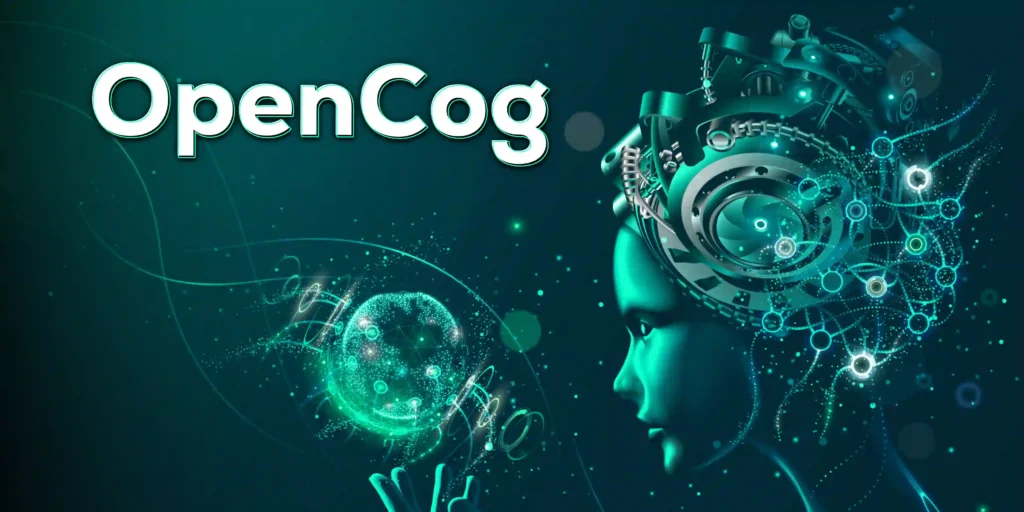OpenCog is a sophisticated artificial intelligence (AI) software program framework that is specially designed to facilitate the improvement of artificial general intelligence (AGI). AGI refers to particularly self-reliant structures that can outperform humans in a huge variety of cognitive tasks.
Introduction
What sets OpenCog apart from other AI frameworks is its unique cognitive architecture, which targets mimicking human-like intelligence and reasoning skills. It combines diverse AI strategies, which include probabilistic logic networks, evolutionary mastering, herbal language processing, and more.
The significance of OpenCog lies in its capacity to increase AGI studies and development. By providing a complete platform for constructing intelligent systems, OpenCog enables researchers and builders to explore new avenues in gadget getting-to-know, information illustration, and hassle-fixing.
OpenCog‘s open-supply nature encourages collaboration inside the AI network. This fosters innovation and allows for the collective effort of international experts to push the boundaries of AGI technology.
In essence, this software program framework serves as an effective device for advancing AGI with the aid of a bendy and sturdy framework for developing smart systems. Its cognitive structure and open-supply nature make it an essential element in the quest for creating pretty capable artificial trendy intelligence.
The Components of OpenCog: A Breakdown of the Key Building Blocks
OpenCog is an effective framework for artificial widespread intelligence (AGI) that includes diverse key building blocks. Understanding those components is essential to comprehending the capabilities and abilities of this software program framework.
One of the fundamental components of OpenCog is Atom Space, which serves as an expert illustration machine. It acts as a database for storing and organizing information inside the shape of atoms that may represent principles, relationships, or assertions.
Another crucial aspect is probabilistic logic networks (PLN), which afford reasoning talents to this software program framework. PLN allows for uncertain and probabilistic reasoning, allowing the system to make inferences primarily based on incomplete or ambiguous facts.

Meta-optimizing semantic can Evolutionary search (MOSES) is yet another fundamental component of OpenCog. MOSES combines evolutionary algorithms with system learning techniques to optimize complicated patterns and rules in the gadget. This allows it to enhance its overall performance and flexibility over time.
OpenCog consists of herbal language processing (NLP) abilities. These NLP functionalities permit the machine to apprehend and manner human language inputs, making it more accessible for interacting with customers.
By combining these components collectively, OpenCog ambitions to create an AGI device that could examine from experience, cause probabilistically, optimize its very own expertise base through evolution, and recognize human language inputs. Understanding these building blocks offers insight into the ability, strength, and flexibility of this software program framework in advancing AI studies and development.
The Potential Applications of OpenCog in Various Industries
OpenCog, an open-supply software program framework, has the ability to revolutionize diverse industries via its packages in cognitive robotics, herbal language processing, bioinformatics, drug discovery, and smart towns.
In the sphere of cognitive robotics, this software program framework enables machines to have human-like intelligence and engage with their surroundings. This era has tremendous capability in regions inclusive of self-reliant motors, healthcare robots, and commercial automation.
Natural language processing is another place where OpenCog shines. Providing information and processing human language in a meaningful manner may facilitate advanced conversation among people and machines. This has applications in virtual assistants, customer support chatbots, and language translation services.
In bioinformatics and drug discovery, OpenCog‘s capabilities may be leveraged to research giant quantities of biological data successfully. It can help researchers figure out patterns and relationships within complex datasets to accelerate the development of recent pills or better understand diseases.
OpenCog‘s application extends to clever towns. Integrating with numerous sensors and data resources inside city environments could help optimize aid allocation for power management structures or decorate traffic waft via smart transportation structures.
The versatility of this software program framework makes it an effective tool for innovation across extraordinary industries. Its capability to technique herbal language efficaciously blended with its ability in cognitive robotics opens up interesting opportunities for automation and more desirable human-system interactions. Additionally, its contributions to bioinformatics research and smart town initiatives demonstrate its big impact on enhancing performance and sustainability in numerous domains.
The Challenges in Developing OpenCog and Ensuring Ethical Usage of AGI
Developing OpenCog, an open-source synthetic preferred intelligence (AGI) platform, provides several demanding situations that ought to be addressed to ensure moral usage and mitigate capacity dangers. One of the critical challenges is the manipulation problem in AGI development. As AGI structures end up being more superior and self-sufficient, making sure that they align with human values and goals becomes increasingly complicated.
The fee alignment trouble arises while AGI structures develop their very own targets that may not align with human values. It is vital to design mechanisms that permit price alignment between people and AGIs to avoid unintentional outcomes or conflicts of interest.
Another assignment lies in setting up strong safety protocols at some point in the development process. AGIs can surpass human intelligence rapidly, making it vital to implement protection measures that prevent them from causing harm or acting against human hobbies.
Ethical issues are paramount in AGI development. Developers should navigate problems that include privacy, equity, responsibility, and transparency while ensuring the accountable use of AI technologies. Addressing these concerns requires collaboration between researchers, policymakers, and enterprise professionals to establish pointers and policies.
Developing OpenCog and ensuring ethical utilization of AGI involves addressing demanding situations, including control hassles and cost alignment problems, and implementing sturdy protection protocols. By thinking about these factors for the duration of the development technique, we can try to create a future where AGIs make a positive contribution while minimizing risks related to their deployment.
Comparing OpenCog with Other Approaches to AGI Development
When it comes to the improvement of artificial general intelligence (AGI), numerous tactics are being pursued by unique corporations. In this phase, we will compare OpenCog with two distinguished examples: Singularity NET and DeepMind’s AlphaGo Zero, as well as comment on IBM Watson.
OpenCog is an open-supply AGI framework that aims to create human-degree intelligence by combining various cognitive algorithms. It emphasizes building a gadget that can analyze reports and adapt to new situations. OpenCog specializes in developing a bendy and scalable architecture for AGI development.
Singularity NET, then again, is a decentralized AI marketplace powered by blockchain generation. It aims to bring together multiple AI technologies and developers, inclusive of AGI systems like OpenCog, to collaborate and provide AI offerings via a unified platform.
DeepMind’s AlphaGo Zero received great interest for its success in gaining knowledge of the complex sport of Go with no prior human information. It applied deep reinforcement, got to know strategies to teach itself via self-play, and surpassed human-level performance in just a few days.
IBM Watson is another terrific example in the area of AI, especially regarded for its success in natural language processing and query-answering abilities. It makes use of system-studying algorithms and large quantities of statistics to offer intelligent insights and solutions across numerous industries.
While these types of methods have their own precise strengths and cognizance areas, they share the common aim of advancing AGI development. The assessment between them sheds light on unique techniques employed in this area, showcasing the various perspectives and improvements made towards reaching artificially preferred intelligence.
The Future Possibilities and Implications of a Mature OpenCog System
The future opportunities and implications of a mature this software program framework system are sizeable and can substantially impact society. As AGI (artificial general intelligence) technology continues to increase, it opens up new avenues for collaboration between human beings and AI.
One of the key aspects of a mature OpenCog machine is its potential to recognize and study human input. This way, human beings can work alongside AI systems, leveraging their computational electricity and analytical talents to remedy complicated problems extra effectively. This collaboration can revolutionize diverse industries, including healthcare, finance, and studies.
In terms of societal impact, a mature OpenCog machine may want to lead to sizable advancements in areas like personalized medicinal drugs, weather change mitigation, and resource allocation. By combining human information with AI competencies, we can address these global challenges more effectively.
It is important to take into account the ethical implications of this collaboration. As AGI becomes more state-of-the-art, questions concerning privacy, fact protection, and activity displacement get up. It is important that we set up strong frameworks for responsible improvement and deployment of AI technologies.
A mature OpenCog machine holds massive potential for human-AI collaboration. By harnessing the energy of AGI technology at the same time as ensuring ethical concerns are met, we can pave the way for a destiny in which people and AI work collectively toward fixing complex issues for the betterment of society.
FAQS
OpenCog is an open-source software framework designed for the development of Artificial General Intelligence (AGI). It aims to create a platform that facilitates the building and implementation of intelligent systems capable of performing a wide range of cognitive tasks.
OpenCog distinguishes itself by focusing on AGI, aiming to create systems with broad cognitive abilities, as opposed to narrow or specialized AI. It emphasizes integrative and scalable approaches to intelligence.
OpenCog consists of various components, including the Atom Space knowledge representation system, the MOSES probabilistic logic reasoning engine, and the PLN (Probabilistic Logic Networks) for pattern recognition and learning.
